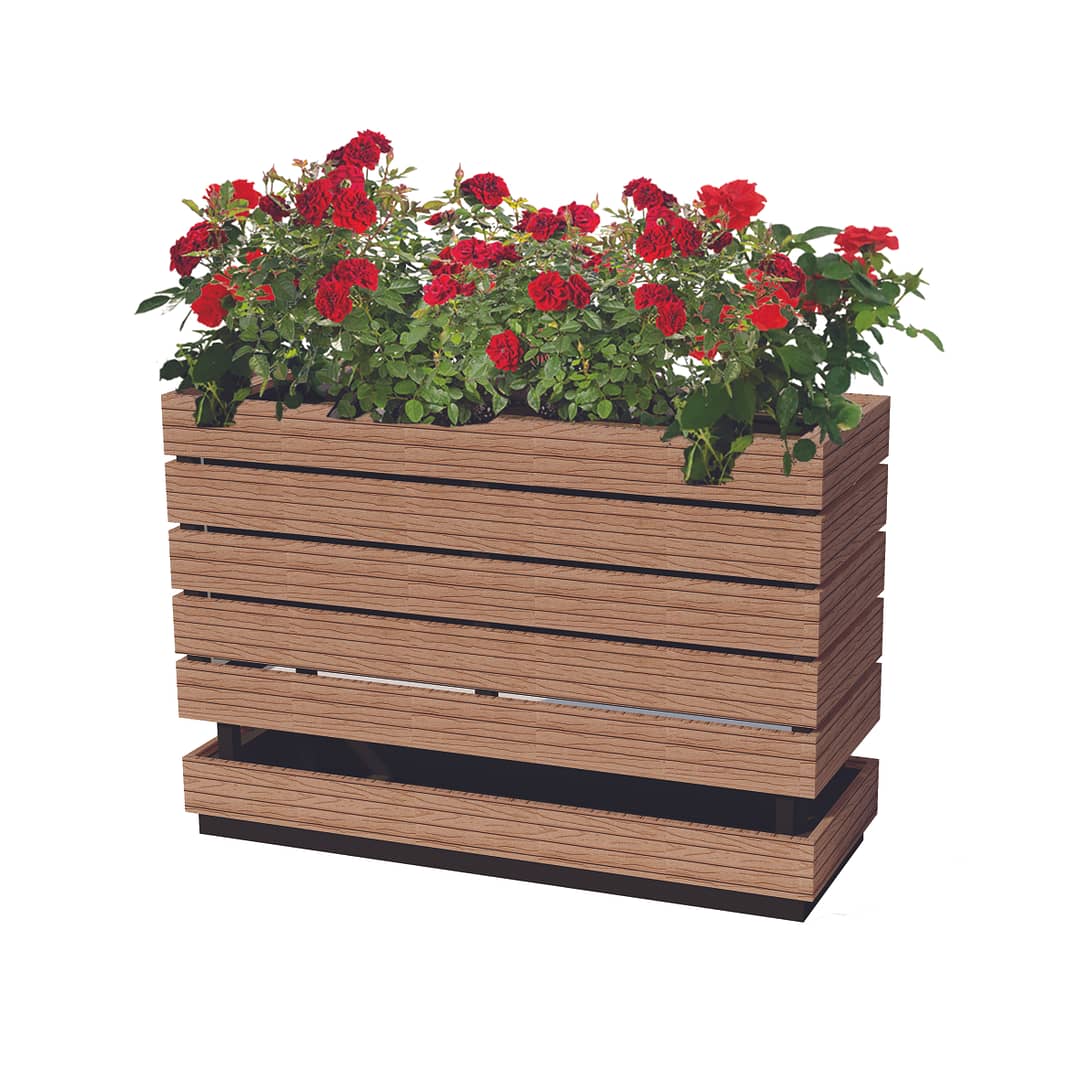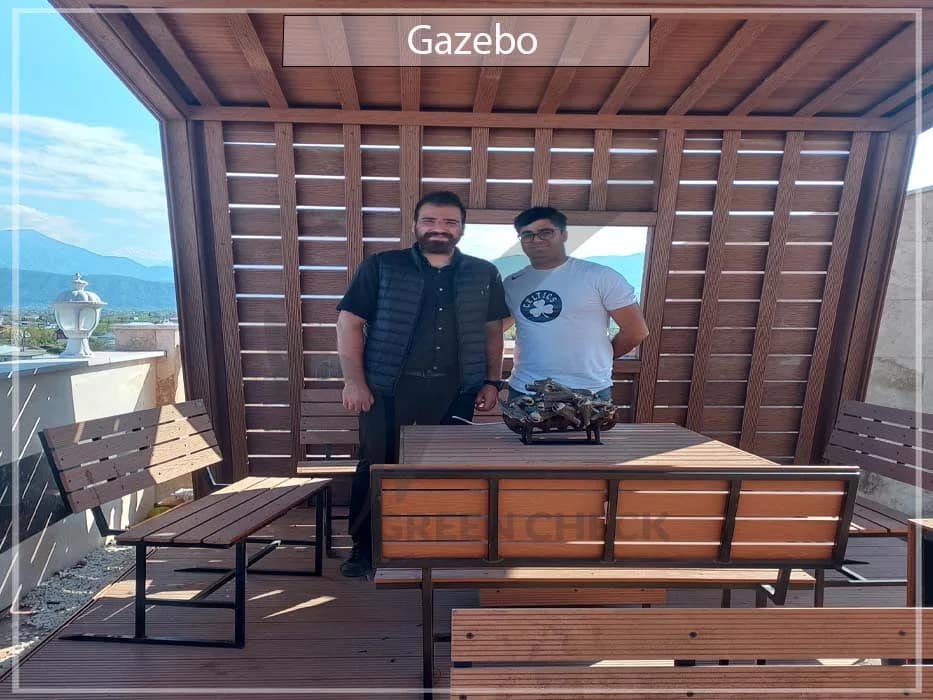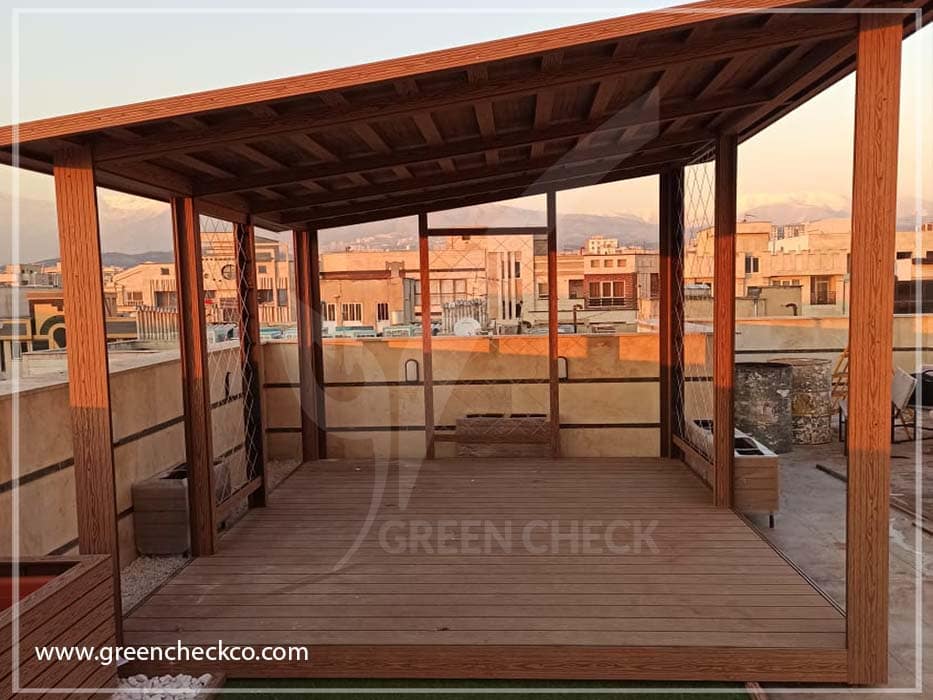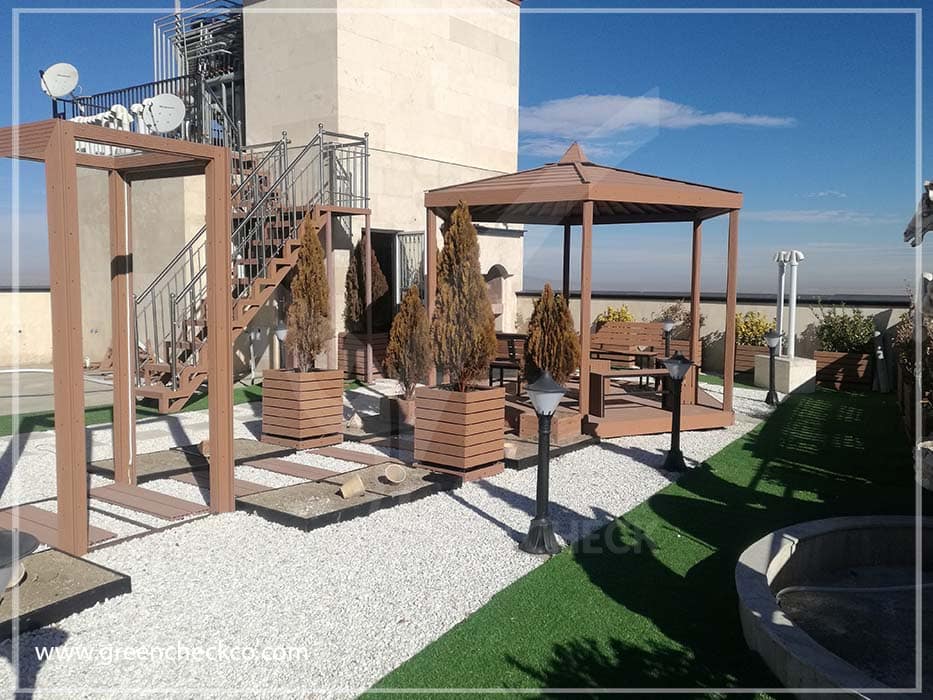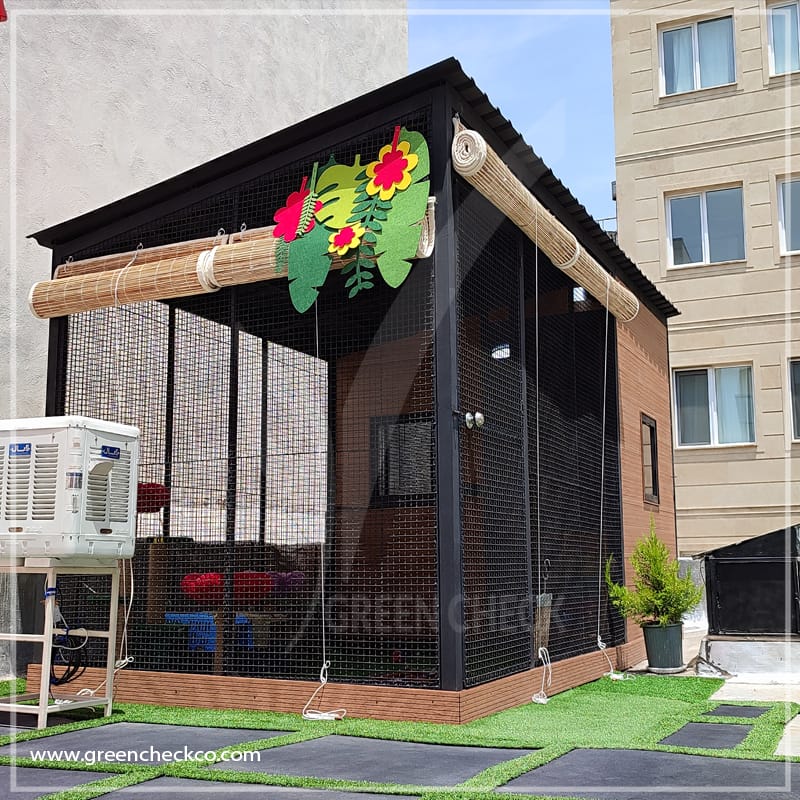What is a Gazebo?
Introducing all kinds of wooden, metal, cement, glass Gazebos
A gazebo is a type of structure used as a canopy and can provide shade or shelter from weather conditions such as sun, hail, snow, and rain.
A Gazebo may have an open roof or a dome-shaped roof, usually built in the open space of villas, home yards, gardens, green parks, roof gardens, seashores, forests, etc. The name “gazebo” is nowadays used for a tent like canopy structure with open sides used as partial shelter from sun and rain at outdoor events. Having a gazebo in a garden, villa, or backyard is a beautiful space for holding parties and family gatherings and spending warm nights. It can even be implemented in the rooftop garden. Gazebos can also be used for economic purposes. In coffee shops or open spaces, gazebos are used to provide services and sell products.
The use of gazebos in the roof garden
There are two types of gazebos:
simple and complex. Its simple type is the prefabricated ones that can be easily prepared and used in landscaping design, but its complex type must be designed and built by skilled professionals.
Various factors of gazebo design and construction:
- Gazebo material
- Gazebo dimensions
- Plants used in a gazebo or on the façade of a gazebo
- Privacy factor
Gazebo material:
Metal, wood, or other resistant outdoor materials are used for gazebos. Bricks can also be used for gazebo support. Various designs and wood-made models give the gazebo a beautiful effect. Combining metal and exposed concrete is one of the most modern gazebo designs. Wood plastic composite (WPC) is a good choice as an alternative durable material.
Advantages of using wood plastic composite (wpc):
After combining materials, including Pulp fibers, almond shells, bamboo, straw, polyethylene, PVC, and polypropylene in the extrusion machines, they form a thick paste, which is the primary material of this type of composite. After forming this raw material and preparing the required profiles and sections, any type of resin and composite materials are added to them, and in the last step, these materials are formed in molds and will be dried afterward.
Among the advantages of using plastic wood and or composites are insulated and 100% moisture-proof.
1) Resistant against the penetration of insects and animals such as mice and termites, etc.
2) Usability in wet and damp environments (due to being insulated against moisture)
3) It brings us the feeling of natural wood and the warmth of wood.
4) It ignites later than normal.
5) For each ton of this product, 450 kg of plastic and 500 kg of wood chips are recycled.
6) Very high resistance against scratches and breakage and having a life of at least 30 years without deformation.
7) Prevents the penetration of water and the roots of fungi and molds.
8) Resistant against the absorption and penetration of any kind of microbes and bacteria, resistant against the penetration of any acid, liquids, and fats
Gazebo Dimensions:
The size of a gazebo should be chosen according to the desired environment. People’s tastes, usage intentions, overall size of the space, and desired facilities are effective factors in choosing the dimensions of a gazebo.
Plants used in a gazebo or on the façade of a gazebo:
Using plants such as vines and Bougainvillea on the roof and gazebo columns adds life to the gazebo space. The plants used in gazebos should be suitable for the environment and resistant to weather conditions, especially when discussing full sun exposure. Proper maintenance and forecasting of irrigation and drainage needs of plants should be considered at the design stage of gazebos.
Gazebos and outdoor furniture
Placing outdoor furniture in a gazebo creates a pleasant atmosphere and has a special effect on the environment in terms of visual aesthetics. In addition, placing outdoor furniture in a gazebo makes it suitable for relaxation. In the production of gazebo furniture, there is a range of materials to be used, including aluminum, galvanized coating, and types of wood suitable for outdoor spaces. Furniture needs to be comfortable, light, durable and long-lasting.
Types of gazebos
Depending on people’s taste and the size of the space area, gazebos are made in different shapes, such as rectangles, squares, hexagons, octagons, fantasy, round, and even triangles. This article discusses different types.
Metal gazebo:
The important advantages of this type of gazebo compared to wooden gazebos are their lower weight, higher flexibility and resistance, and, accordingly, lower price. Assembling a metal gazebo is very quick. Using colors resistant to environmental conditions makes metal gazebos durable and long-lasting.
Concrete gazebo:
The distinctive feature of a concrete gazebo is its high strength and durability. This type of gazebo is very suitable for forest and mountain areas. In general, the use of concrete in gazebo construction in modern designs is more considered by designers.
Modern gazebo:
A modern gazebo or a hybrid gazebo is made by combining old and new designs. Its raw materials differ depending on the environment in which it is made.
This type of gazebo is very attractive and liked by most people due to its combination.
These gazebos usually have furniture and amenities such as a table, barbecue, grill, swing, and bench. A modern gazebo can be used in different places, such as private gardens, rooftop gardens, hotel grounds, and villas. You can design and implement the interior decoration of the gazebo according to your taste with different elements.
Wooden Gazebo:
In areas with high air humidity, gazebos are made of moisture-resistant trees, and in dry areas, to prevent the risk of insects and termites, special woods such as saturated wood and thermowood are used to make wooden gazebos. Wooden gazebos are usually used in forests, seashores, and roof gardens. Wooden gazebos have some advantages, including:
- Lasting and usually permanent
- compatible with the environment
- easy to make
Fabric Gazebo:
One of the most attractive types of gazebo is the fabric gazebo. Outdoor fabrics are often used to design the walls and roof of this type of gazebo. A fabric gazebo is usually used on seashores or in gardens where weddings and celebrations are held. The main structure of this type of pavilion is metal or wooden, and these gazebos are usually portable and modular.
Brick-made Gazebo:
A brick-made gazebo is a solid structure built centuries ago and can be used to build a kitchen in natural scenery and a place to relax. This type of gazebo has strength durability, long-lasting, and the possibility of use in all seasons.
UPVC Gazebo:
A UPVC gazebo is a sun-blocking room. The walls and windows of such a gazebo are made of double-glazed UPVC and have a glass roof. This type of gazebo is mostly used for resorts, greenhouses, and teahouses.
Glass gazebo (Small Atrium):
The glass gazebo is one of the most modern and newest gazebos that can be used in all kinds of spaces. The glass material used to make these gazebos is resistant or tempered. The structure of these types of gazebos is iron or aluminum. Thermowood (wood resistant to environmental conditions) can also give it a sense of life-freshness. Along with exposed concrete, glass is one of the newest choices by designers.

